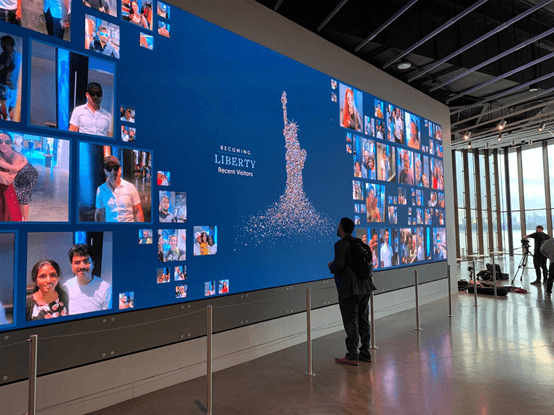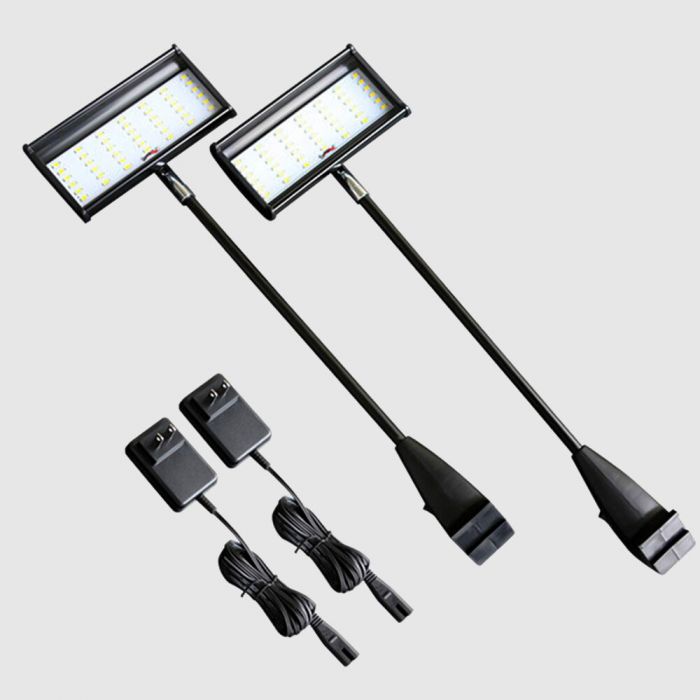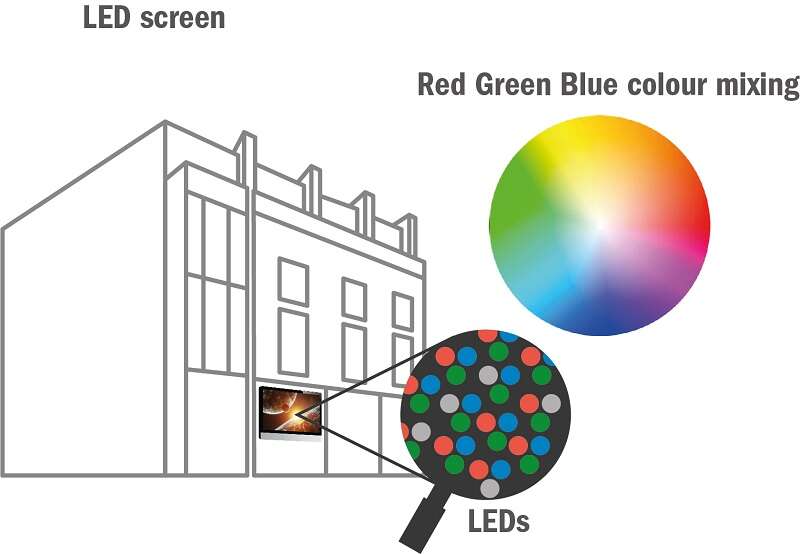Good Tips To Selecting Led Rental Screen
Wiki Article
When Looking At Led Displays, What Are Pixels? Pitch & Resolution?
In the research of LED displays the pixel size and resolution are very important. Both of these factors directly affect the clarity and detail of the display, and also the overall visual experience. Here's why these two elements have a bearing on the overall experience:
1. Image Quality
Pixel Pitch Pixel pitch can be defined as the distance that lies between one LED pixel's center and the center of the next. A lower pixel pitch means that the LEDs are closer together. This means more pixel density, as well as better resolution. This translates directly into clearer and more detailed images.
Resolution: Resolution refers to the total amount of pixels displayed on a display. It is typically described as a ratio of width to height (e.g. the resolution is 1920x1080). A higher resolution display is able to be more detailed and gives a greater immersive experience, particularly important for large screens where the viewers are close to the display.
2. Viewing Distance
The pixel pitch is in direct correlation to the ideal viewing distance. Displays that are seen from a distance, such as those in exhibitions or retail stores, as well as indoor screens, a smaller pixel pitch is necessary to avoid pixelation. A bigger pixel size might be sufficient for large outdoor displays or billboards which will be observed from afar.
3. Content Versatility
Displays that have smaller pixels and higher resolution can display a range of content. These include high-definition videos, intricate graphics, and small text. This flexibility can be vital for applications such as digital signage, broadcast studios and control rooms.
4. Cost-related Implications
The price of a screen will increase significantly when the pixel pitch is decreased. A higher resolution screen is more expensive because of the higher quantity of LEDs required. The budget should be able to accommodate the need for high resolution.
5. Application Specificity
The significance of the resolution or pixel pitch can differ based on the use case.
Indoor Displays require a smaller pixels (e.g. between 1.2mm up to 2.5mm) in order to guarantee high quality at close-up viewing distances.
Outdoor displays may have higher pixels pitch (e.g. from 4mm to up to 10mm) in order to be seen more distantly and therefore, high resolution is less crucial.
6. Durability, longevity, upgradability and durability
As technology for display advancements the pixel pitch decreases, allowing for greater resolutions even in smaller areas. If you invest today in a screen with the optimal pixel pitches that are more efficient and effective over a longer time. This reduces the need to update frequently.
Conclusion:
Pixel pitch, resolution and experience when viewing are the most important aspects in the performance of LED displays, especially in relation to image quality and the versatility of content. To choose the best LED display that fits your application budget, size, and audience, you should carefully look at all of these variables. See the most popular creative led displays for site recommendations including advertising tvs, outdoor led screen display, led display screen rental, led transparent display, video walls, display led outdoor, outdoor digital display, led in walls, tv led wall, led display screen rental and more.

When Selecting An Led Display How Important Is It To Take Into Account The Rate Of Refresh?
When researching LED screens should you take into account the refresh rate it is particularly when looking at LED displays that can display dynamic content such as live broadcasts or interactive applications. Here are a few of the reasons it is crucial to refresh:
1. Image Smoothness and Clarity
The term "refresh rate" is described as the amount of refreshes per second (measured in Hertz, orHz) in which the display is updated with its image. A higher rate of refresh results in smoother motion and reduces flickering.
The importance. Displays that show animations or video content with speedy motion, a refresh rate above 3,840Hz is essential to ensure smooth and fluid motion. This is particularly important for stadiums for sports or digital signage that require smooth visual performance. enhances the user experience.
2. Flicker-Free Performance
Flicker. Displays with low refresh rates may cause noticeable flicker when viewed using cameras. The flickering could cause eye fatigue and strain, making it difficult to look at the screen for extended periods of time.
Application: A high-refresh rate is ideal for environments that are to be filmed or photographed for broadcasting studios, events and even the stage. It helps reduce flickering which ensures a clean capture of the video without visual artifacts.
3. Visual Quality of different lighting conditions
Impact on Brightness The impact on brightness can affect the performance of a display under different lighting conditions. For instance, in the areas with bright lighting an increased refresh rate can help maintain the quality of images. It will also prevent visible flickering that can cause damage to the display.
Use: This is useful in outdoor shows or stage events where the lighting is frequently changed.
4. Content Compatibility
Synchronization - The rate of refresh must be compatible with all source of content, including video playback systems or cameras. If the refresh rate of the display does not match the frame rate of content, it can result in the frame rate being off or judder, which negatively impacts the experience of watching.
Application Content from different sources in professional settings such as TV studios and large-scale event venues Matching the refresh rates to the frame rates for the content is crucial for a smooth playback.
5. Enjoy a better viewing experience
Motion Handling High refresh rates decrease motion blur while providing a more precise, clearer image. This is an excellent feature for sports broadcasting, gaming, or any other situation that requires a fast-paced pace.
Application Venues that have sporting events, gaming or other content that is high-energy, a high refresh rate ensures that viewers are able to experience every detail with clarity.
6. Reduced Eye Strain
Comfort: Low refresh rates may result in eye strain, particularly in areas that are close to the display and when the content is being displayed for prolonged periods.
Application: In retail spaces or offices, as well as public areas where people are watching the display for long periods, a high refresh rate contributes to an enjoyable and comfortable experience.
7. Renting and Staging Applications: Performance
Flexibility - For LED displays used to display various content in various settings, a high refresh rates assures that the display will be able to satisfy the requirements of any event. This can include live performances such as corporate presentations, corporate events or multimedia showcases.
Application: A high-refresh rate is ideal for applications that require the display to be flexible and adaptable.
Conclusion:
The speed of refresh is an important element that impacts LED display's visual quality as well as comfort level and versatility. This is especially important in applications that require live events, dynamic content or situations that require the display to be viewed for long periods of time. If you're looking at LED display options for your needs be sure to consider the rate of refresh. This will ensure that the display operates well and is flicker-free, improving the viewer’s experience. Check out the recommended led rental screen for more advice including flexible led display, screen led display, led transparent display, led panel transparent, display screens, led in the wall, transparent led display screen, led video wall, screen led display, led in the wall and more.

How Important Is The Roi, Cost And Energy Efficiency When Researching Led Displays?
When researching LED displays, the cost as well as ROI (Return on Investment) and energy efficiency are important aspects. They directly affect the financial viability of the investment, the long-term value as well as the operating costs. Why each of these factors is crucial:
1. Initial Cost
Considerations for budgeting: The initial cost associated with purchasing LED displays can be an important factor in any project. This includes not only the price of an LED display but also costs for installation, structure of the mounting, and any other necessary equipment.
Quality vs. Cost: While displays with lower prices may initially look appealing, there may be trade-offs regarding quality, durability or feature. The initial cost should be considered in relation to the quality and longevity of the display.
Application: In cases where budgets are tight, careful analysis of performance versus costs is vital. For instance, a high-end display may be required for critical applications, such as advertising at top locations. Cheaper options may be sufficient in less demanding settings.
2. Return on investment (ROI).
Revenue Generation: ROI is often related to the capability of LED displays to create income. This can be through advertising, customer engagement or brand visibility. Displays that have compelling content that grabs the attention of customers can have a positive ROI in terms of advertisement and sales.
Longevity and durability: Displays of high quality with longer life spans are more durable, and require less maintenance and replacement as time passes. By investing more in the beginning, it can save you money in the long run.
Impact of Features on ROI: Features like high brightness, wide viewing angles, high resolution and high resolution may increase upfront costs however, they could also improve the engagement of viewers, leading to a higher ROI.
3. Energy Efficiency
Operational costs Efficiency in energy is a key factor in reducing the expense of operating the LED display. The lower the electricity bill the lower. This is especially relevant for large display or displays that are operational all day long.
Environmental Impact Displays that use less energy contribute to sustainable goals by reducing carbon footprints. This becomes increasingly important for organizations and businesses which place a great emphasis on environmental responsibility.
Long-term cost savings: While energy-efficient displays may have a higher price initially, they could reduce the cost in electricity throughout their life, increasing the overall ROI.
Energy efficiency is a great method to lower the overall operating cost of installations in areas that are characterized by high energy prices or large-scale deployments.
4. Cost of Ownership Total Cost of Ownership
Maintenance and repairs Costs of ownership do not just include the price paid for the item, but also any maintenance, repair, or downtime that may be needed. TCOs are generally lower with displays that have a longer lifespan and more durability. This makes them more cost effective at the end.
Enhancements and Scalability. Consider the ease of scaling or upgrading the display. It is best to choose an adjustable display that can easily be upgraded or expanded.
Application: If displays are going to be utilized for a long period of time in settings such as public spaces or in corporate settings with a lot of traffic, the TCO is important to ensure that investment will remain affordable.
The Financing Options
Flexible Financing - A lot of companies offer flexible financing options that can aid in reducing the initial cost of high quality displays. This is especially beneficial for businesses that wish to invest in digital signage but still preserve the cash flow.
The ROI of leasing options is also able to have an impact on the ROI. Leasing allows businesses to improve their technology without needing to invest a lot of money.
6. Market Competitiveness
Cost is versus. competitors: The price and ROI of your LED display may also impact your competitiveness in the market. A better display could allow you to differentiate yourself from the competition, attracting clients and more customers.
Application: In the industries that have high levels of competition, like entertainment and retail investing in displays that are of higher quality, but also deliver higher ROI can help you gain an advantage over your competitors.
Conclusion:
The cost, return on investment, and energy efficiency all play a role in determining the long-term value of an LED display. In balancing the initial cost against the expected return on investment, considering energy efficiency to reduce operating costs, and knowing the total cost of ownership will help to ensure that the display is in line with both performance and financial expectations. These aspects are crucial to making a decision that is compatible with your budget and goals for the future. View the most popular lightweight led screen for more examples including led display screen rental, led display rental, display led outdoor, led on screen, led video wall panels, outdoor display led, led a board, led screen display, led transparent screen, led transparent screen and more.
